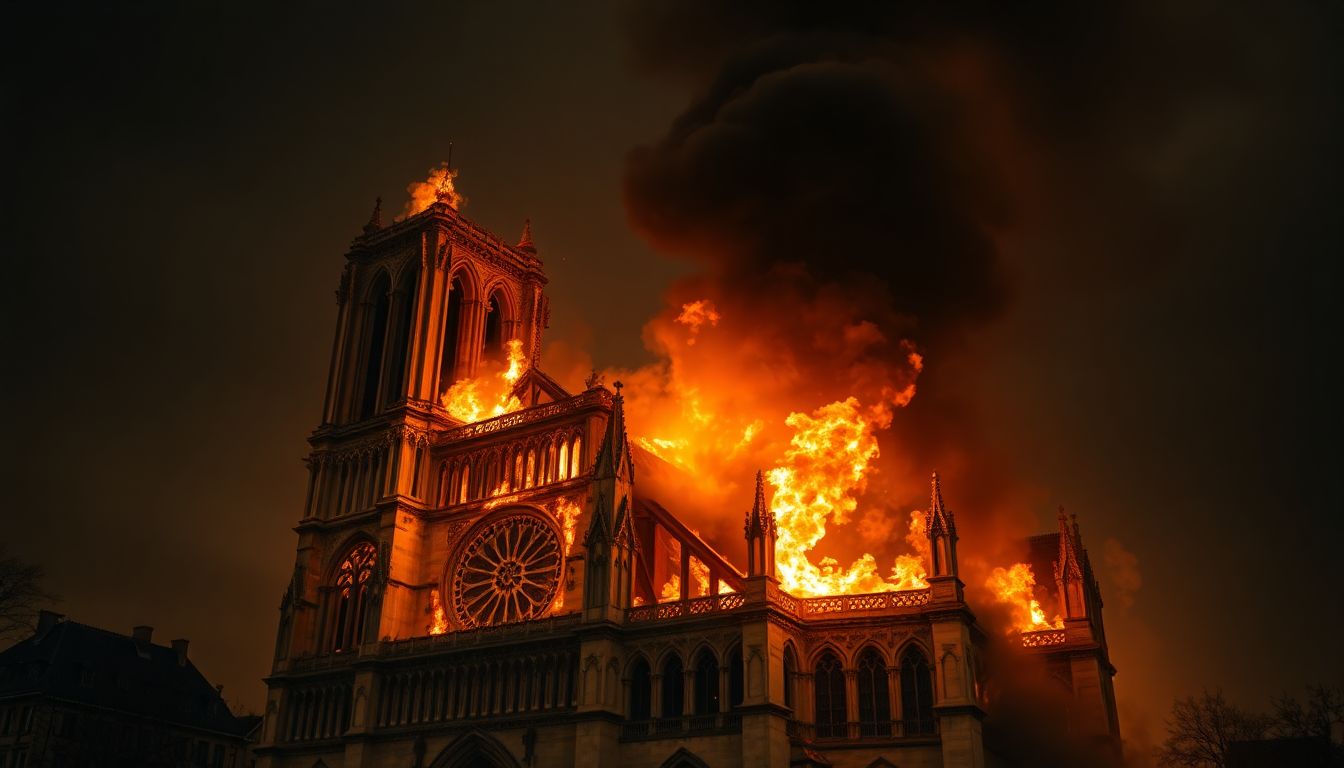
Notre Dame Cathedral Fire: Unraveling the Cause of a Devastating Blaze
The tragic fire that engulfed Notre Dame Cathedral on April 15, 2019, marked a heartbreaking moment for Paris and the world. Bright flames illuminated the night sky, casting a surreal glow over the iconic structure. As smoke billowed into the air, millions watched in horror, feeling the weight of history slipping away. Notre Dame is not just a building; it stands as a beacon of culture, art, and faith—a symbol of resilience over centuries. This article aims to explore the leading theories and confirmed facts surrounding the cause of the Notre Dame fire and what it signifies for the future.
The Initial Stages of the Fire: A Timeline of Events
The Discovery
The fire was first noticed just after 6:00 PM local time. Security guards, conducting routine checks, spotted flames in the attic, known as the "forest." An emergency call was made immediately, and firefighters arrived shortly after. By 6:20 PM, the first firefighting units were on-site, but the blaze had already begun to spread rapidly.
Rapid Spread
The fire quickly grew due to several factors:
- Building Materials: The timber used in the cathedral's structure was highly flammable.
- Wind Conditions: Gusty winds contributed to the fire’s intensity.
- Initial Video Footage: Early footage captured the flames racing across the roof, which was under renovation.
Emergency Response
Firefighters faced immense challenges. While around 500 firefighters responded, the unique design of the cathedral made it difficult to combat the fire effectively. Approximately 400,000 liters of water were utilized in the effort, but obstacles such as narrow passages slowed their progress.
The Investigation: Uncovering the Origin and Cause
Official Investigation
Following the fire, an official investigation was launched. Authorities examined the site and collected evidence. By July 2019, investigators confirmed that the fire likely started in the attic but detailed findings took months to surface. Official statements ruled out foul play, focusing on possible accidental causes.
Leading Theories
Several theories emerged regarding the fire's origin:
- Electrical Short Circuit: This was the most discussed possibility and aligned with the renovation work ongoing at the time.
- Accident Related to Renovation: Workers may have mistakenly triggered sparks.
- Refutation of Unsubstantiated Claims: Some fringe theories, like sabotage, were quickly dismissed.
Accidental vs. Deliberate
Evaluating the evidence suggests the fire was accidental. The investigation revealed no signs of intentional destruction. Factors such as poor wiring or construction work were much more likely culprits, emphasizing the importance of safety oversight during renovations.
The Role of Building Materials and Construction
Historical Construction
Notre Dame was built in the 12th and 13th centuries, utilizing materials that, while beautiful, were prone to catching fire. Experts noted that the centuries-old wooden framework significantly contributed to the rapid spread of the blaze.
Renovation Work
At the time of the fire, extensive restoration was ongoing. Renovations to the spire and roof involved using scaffolding and modern tools. Some speculate that construction workers may have left tools or materials in dangerous positions, but investigations have yet to pinpoint exact issues.
Safety Regulations
Previous fire safety checks revealed that Notre Dame had not fully integrated modern fire safety protocols. Comparisons with similar historical structures showed gaps in compliance that could have helped prevent such a devastating fire.
The Aftermath: Lessons Learned and Future Preventative Measures
Damage Assessment
The Notre Dame fire left an indelible mark. The roof collapsed, and the iconic spire was lost, along with priceless artifacts. Reconstruction will involve meticulous work, evaluating every affected structure and item.
Restoration Efforts
Plans for restoration commenced rapidly. Initial estimates suggested the rebuilding will cost approximately €1 billion. Experts from around the globe offered their services, forming a comprehensive recovery team. The anticipated completion timeline has been set for 2024, aiming to reopen just in time for the Paris Olympics.
Improved Safety Standards
In the wake of the tragedy, immediate changes were made to fire safety regulations for historical sites in France. New protocols emphasize stricter oversight during renovations, ensuring that safety remains a priority.
The Lasting Impact: Cultural and Historical Significance
Global Response
The world reacted with shock and empathy. Fundraising efforts quickly raised over €850 million within days, showcasing global support for restoration efforts. The outpouring of generosity highlights the cultural significance of Notre Dame beyond France.
Preservation of Cultural Heritage
Protecting historical structures is vital for current and future generations. Learning from Notre Dame's loss, similar buildings may require enhanced maintenance protocols to ensure their longevity. Successful preservation efforts in places like Westminster Abbey serve as a model.
Long-Term Effects
The fire has lasting repercussions for tourism and cultural identity in France. Economic analyses project shifts in travel patterns, potentially impacting local business and religious practices as restoration progresses.
Conclusion
The Notre Dame fire served as a wake-up call about the vulnerabilities of historical buildings and the importance of safety regulations. The key findings indicate an accidental cause tied to ongoing renovations. Moving forward, the lessons learned highlight the need for rigorous fire safety measures to protect our shared heritage for generations to come. The legacy of Notre Dame, with its breathtaking arches and vibrant history, will undoubtedly endure as efforts to restore it bring hope and renewal to Paris and beyond.




